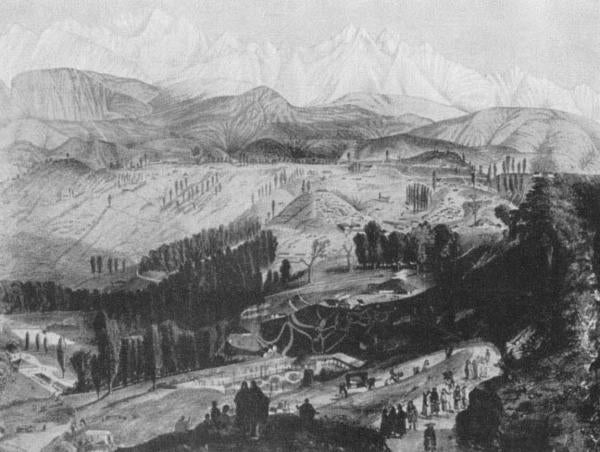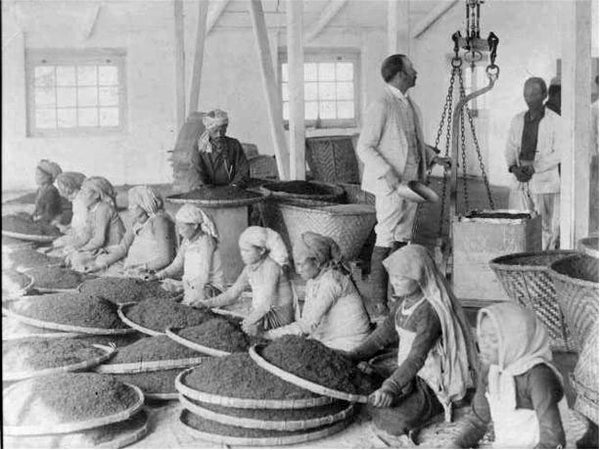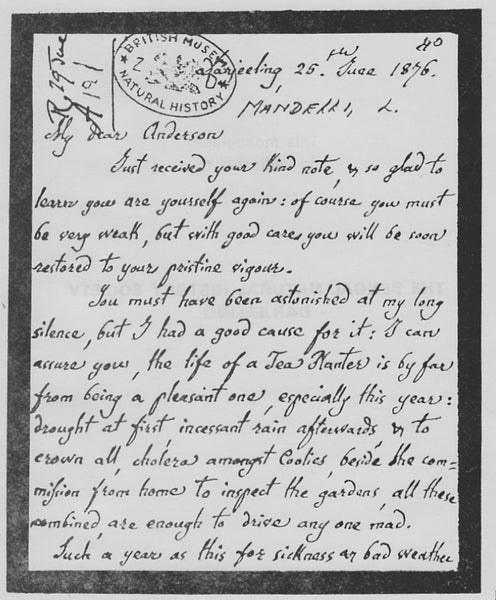
A man from Malta, Darjeeling Tea and Birds - Part 1

Lured by adventure and the prospect of fortune, the Darjeeling tea industry attracted some interesting characters. One such was Louis Hildebrand Mandelli Castelnuovo. Descendant of Count Castel-Nuovo, a Maltese aristocrat, Mandelli is reputed to have fought alongside the Italian hero Garibaldi, and fled to South America before making his way up to Darjeeling.
How he found his way to this remote corner of the British colony in 1864 is not clear. He started his career in Darjeeling as manager of Lebong and Minchu tea garden. In the coming years he became the owner of a couple of tea gardens, and also a prime commercial strip in downtown Darjeeling that later bore his name for a while.
The legacy of Louis Mandelli, however, endures in the region for a completely different reason than tea or his untimely and mysterious death. Mandelli was also an amateur ornithologist who invested much time and money to document the native bird population. Much of his scientific findings are still used and valued today.
Ornithocus Mandelli (a rare snow-pheasant), Pellorneum Ruficeps Mandelli Blanford (Spotted Babbler), Arboricola Mandelli Hume (Redbreasted Hill Partridge), Phylloscopus Inornatus Mandelli Brooks (Mandelli's Yellow-Browed Leaf Warbler) are some of the birds that still flit about the ridges of Darjeeling hills, bearing his regal name.
Some of the birds named after Mandelli...
Four years after Mandelli became manager of Lebong & Minchu the garden was taken over by the Land Mortgage Bank of India, along with the neighboring Mineral Spring tea garden. Mandelli was tasked with the management of both gardens which spread over 600 acres.
In 1872 Mandelli became manager of the 750-acre Chongtong Tea Estate in addition to the two gardens he already ran. Although later it was not uncommon to manage multiple gardens, during those early years when communication in the hills was sparse, it was a significant feat.
Mandelli's letters of the period, discovered only in the 1985, reflect the arduous task of tea planters, especially for one with several gardens under his charge. "I have three gardens to look to, and large ones, and I am in the midst of manufacturing," he wrote in a letter dated 3 May 1873. "I have been away from my place for the last 20 days to another garden under my charge as my Assistant there was doing everything wrong...I have no time to spare now a days," he notes, reflecting the work-load at hand.
On 29 June 1873 he wrote, "I could not find time...being so busy looking after three gardens under my charge, and each of them is at a great distance from one to another, so I have to remain at each for days and days, hence the delay." He was apologizing to another bird collector Andrew Anderson for being tardy in correspondence. Mandelli must have been a workhorse to be able to pursue his passion for birds amidst all the work in the tea gardens. It could also have been an apt pastime in the lonely remoteness of the tea gardens.

In a letter of 25 June 1876, Mandelli sums up the challenges faced by a tea planter, which actually rings true even today. "I can assure you, the life of a Tea Planter is by far from being a pleasant one, especially this year: drought at first, incessant rain afterwards, and to crown all, cholera amongst coolies, beside the commission from home to inspect the gardens, all these combined are enough to drive anyone mad."

These are excerpts from Mandelli's 48 letters that local historian late Fred Pinn chanced upon at the Natural History Museum, South Kensington, UK in 1985. Based on these letters Pinn published a monograph "L Mandelli - Darjeeling Tea Planter and Ornithologist." Much of the correspondence deals with the subject "avi-fauna"; sadly, there is only a precious little on tea.
In the next part of this blog, we will look at some of the tea gardens that Mandelli bought in Darjeeling, and also his untimely and mysterious death.
Click here to read Part 2.
PS: Sadly, no pictures of Mandelli are to be found anywhere.


